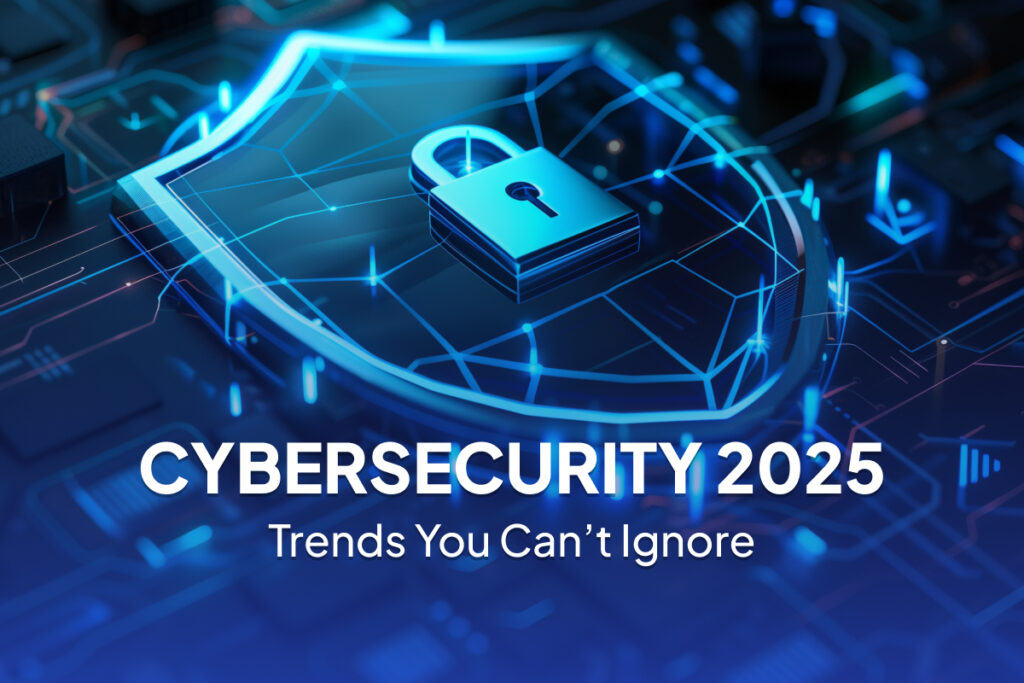Cybersecurity is shifting quickly, and 2025 will bring challenges that businesses can’t ignore. Attackers are adapting faster, their tools are more sophisticated, and the financial and reputational cost of a breach continues to rise.
Here are the key trends shaping the security landscape this year and why they matter for every organization.
1. AI as Both Defense and Threat
Artificial Intelligence is now a standard part of cybersecurity.
- On the defense side: AI helps security teams monitor massive amounts of activity, detect unusual patterns, and automate responses.
- On the attack side: Criminals are using AI to create convincing phishing campaigns, write malicious code, and test weak points more efficiently.
The same technology that protects businesses is also being turned against them, which makes it essential for companies to adopt AI-driven defenses of their own.
2. Deepfakes and Smarter Social Engineering
Phishing is no longer limited to clumsy emails full of typos. In 2025, attackers are using deepfake audio and video to impersonate executives, pressure employees, and manipulate financial processes.
Imagine a voice message that sounds exactly like your CFO authorizing a payment. Or a video call where a “manager” requests sensitive files. These tactics are not science fiction anymore—they’re already being used.
Technology alone can’t stop this. Employees need ongoing awareness training to recognize when something feels off.
3. Cloud Growth and the Risk That Comes With It
Almost every business now relies heavily on cloud services. While providers secure their own infrastructure, the responsibility for safe configuration and access still rests with the customer.
Weak identity management, poor visibility, and misconfigured settings are common openings for attackers. A single exposed database or neglected permission can lead to major data loss.
Strong governance and constant monitoring are no longer optional. Businesses must treat the cloud as an extension of their own environment, not a black box they can ignore.
4. Tougher Regulations and Higher Stakes
Governments are introducing stricter cybersecurity rules and higher penalties for non-compliance. From data protection laws to industry-specific standards, businesses are facing more scrutiny than ever.
But compliance is only the floor, not the ceiling. Meeting requirements doesn’t guarantee safety. Companies that view security only as a checklist will remain vulnerable, while those that integrate it into daily operations will be better prepared for what comes next.
5. Security as a Core Business Priority
Cybersecurity has moved out of the IT department and into the boardroom. A single incident can disrupt operations, drive away customers, and damage reputation for years.
Forward-thinking companies are treating security as part of their value proposition. They are building it into culture, processes, and customer experience—not as an add-on, but as a foundation of trust.
Cybersecurity in 2025 is not about trying to stop every attack. That is impossible. The focus must be on resilience: detecting threats quickly, responding effectively, and recovering with minimal disruption.
The businesses that thrive will be those that prepare now, not after the damage is done. The question for leaders is straightforward: Is your organization ready for the year ahead?
Stay tuned to read more trending tech updates.





